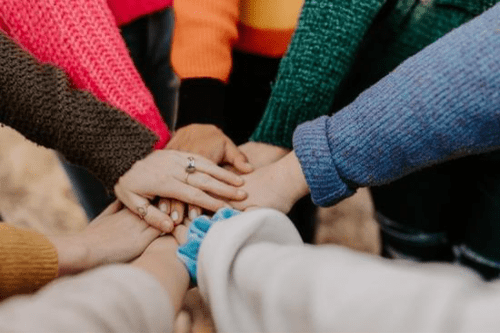What is Social and Emotional Learning?
Social and Emotional Learning (SEL) changed me, and it changed my classroom. Though I tried to consider my students’ emotional landscapes, I knew something was missing. I knew I could inspire students to take more learning risks. I knew I could create a stronger classroom culture that transcended social groups. I knew I could manage my own social and emotional skills to model effective coping mechanisms. But how?
Something clicked when I enrolled in an SEL program through CASEL, the Collaborative for Academic, Social, and Emotional Learning. CASEL’s goal is, “helping make evidence-based social and emotional learning an integral part of education from preschool through high school.” Let me tell you, this course did not disappoint. SEL instruction improved classroom participation, student morale, authentic learning, classroom management, and genuine classroom relationships. Let’s dive in.
There are 5 core Social and Emotional Learning competencies that you can practice with explicit SEL instruction or by using a variety of class texts:
- Self Awareness: Being conscious and aware of your changing self, both emotionally and physically. When practicing self awareness, students and teachers might explore identifying emotions, self-perception, personal strengths, and self-confidence.
- Self Management: Understanding your internal world and acting from an intentional place. Students and teachers will dive into controlling impulses, managing stress, understanding their actions, motivating themselves, setting goals, and organizing.
- Social Awareness: Being conscious of others and the shared community. When students and teachers focus on social awareness, they will build skills around empathy, accepting diversity, respecting others, and understanding multiple perspectives.
- Relationship Skills: Developing social awareness into building foundational, healthy, human relationships. When students and teachers practice relationship skills they build community by practicing communication, using teamwork and cooperation, and managing conflicts if/when they arise.
- Responsible Decision Making: Adding the above skills together before making a decision. Students and teachers practice responsible decision-making by identifying a problem, coming up with creative solutions to the problem, solving the problem, and evaluating the outcomes.
Why should I incorporate Social and Emotional Learning into the classroom?
For. Every. Reason. Possible. (Read for the statistics if the anecdote isn’t enough.)
For a minute, try to relate to this scenario:
It’s Thursday morning. Your alarm clock screams at you to wake up. You have an exciting weekend ahead, but you still have two full days of work. Even more daunting, you have a meeting with your supervisor on Friday to review your quarterly progress. Every time you think about Friday, you feel an overwhelming sense of anxiety, not sure how the meeting will go despite your stellar performance and passion at work. Time to get up.
You walk into the bathroom and mindlessly start your morning routine only to hear your children in a screaming match downstairs. Unfortunately, this happens often enough so you just have to ignore it and keep getting ready. When you walk downstairs, your partner is in an escalated state from listening to the kids, and they take their frustration out on you: “Why weren’t you down here earlier? You never help me.” Instead of pausing to notice your internal turbulence, you scream, “Enough!” putting the entire household into an uncomfortable silence until you all part ways.
Feeling incredibly guilty for yelling and feeling stuck in these maladaptive communication patterns, you pull into work for the day. Still ruminating over how poorly you feel, the office doors open and suddenly you remember the sheer piles of work that need to be done before tomorrow. The second you walk in, your supervisor bombards you with questions about the report you had to take home last night, not taking into account all of your home obligations. Knowing that you didn’t finish the report, you drop a snide, “Maybe if everyone else did their jobs, I would have had an easier time compiling everything,” deflecting all personal responsibility. As a comeback, your supervisor says, “On second thought. Let’s push your quarterly performance review to this afternoon instead.”
End scene. Cue Panic. Flip the script and recognize that many, many students come from turbulent homes and straight into your classroom. Not only does your emotional wellbeing impact the classroom, but add a classroom full of students with varying morning experiences, and that’s a whole lot to manage while simply trying to teach your subject.
When we practice SEL skills in the classroom students take their new learnings home, into other classes, and with them for later use.
According to a synthesis of studies that CASEL cited, data across the board shows that SEL is extremely beneficial in all aspects of life:
- SEL interventions that address the five core competencies increased students’ academic performance by 11 percentile points, compared to students who did not participate.
- There are statistically significant associations between social and emotional skills in kindergarten and key outcomes for young adults years later. Specifically, social and emotional skills decreased the likelihood of living in or being on a waiting list for public housing, receiving public assistance, having any involvement with police before adulthood, and ever spending time in a detention facility.
- About 27% more students would improve their academic performance at the end of the program and 24% more would have improved social behaviors and lower levels of distress.
- A 2021 systematic review found that universal SEL interventions enhance young people’s social and emotional skills and reduce symptoms of depression and anxiety in the short term.
- Cost-benefit research demonstrates the value of SEL programs. The report found an average return on investment for six evidence-based programs of 11 to 1, meaning for every dollar invested there is an $11 return.
- An SEL approach was consistently effective with all demographic groups both inside and outside the United States. This supports the idea that social and emotional assets promoted in SEL can support the positive development of students from diverse family backgrounds and geographic contexts.
- 93% of teachers want a greater focus on SEL in schools. They agree that social and emotional skills are teachable and are calling for schools to prioritize the integration of SEL practices and strategies.
- As of 2021, 62% of parents feel teaching SEL is very important, compared to 55% three years ago. Parents also believe that SEL is not emphasized as much as it should be (81%), that it has become even more important since the beginning of the pandemic (82%), and that it is helpful for children learning online (80%).
Apart from relatable, yet hypothetical, anecdotes and compelling statistics, SEL makes sense. When we look at Maslow’s Hierarchy of Needs, there’s a common understanding that after our basic human needs are met, social and emotional skills follow. Before we can learn, grow, and take risks, we need to feel accepted. When we adopt SEL skills into the classroom, we allow students the chance to tend to their rich, varying emotional worlds before jumping into that day’s lesson.
Eventually, with time and practice, SEL blends itself into everyday classroom routines. How, you ask? Look forward to reading my next article for tangible SEL tips to incorporate into your classroom.
About the Author

The opinions expressed in Montessori Life are those of the authors and do not necessarily represent the position of AMS. On this page |


